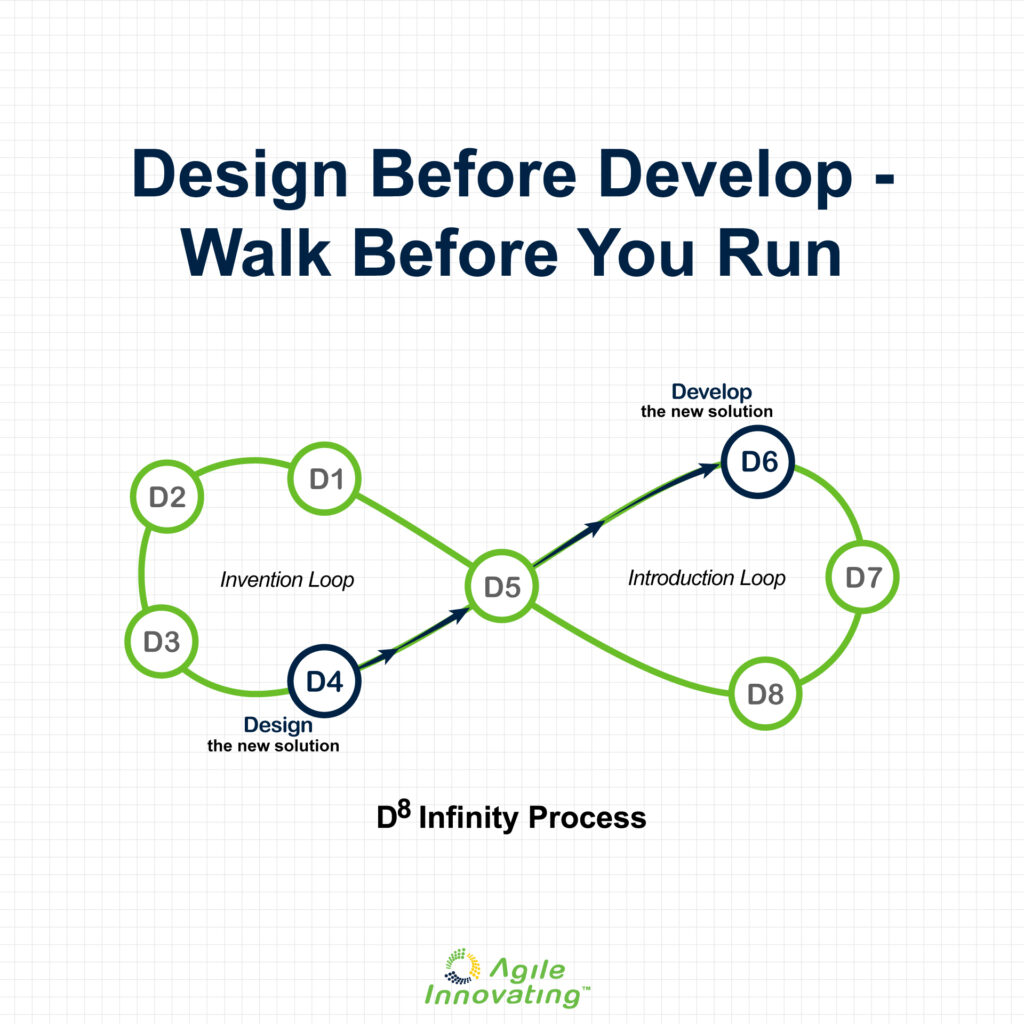
𝗗𝗲𝘀𝗶𝗴𝗻 and 𝗗𝗲𝘃𝗲𝗹𝗼𝗽 are two different steps in the 𝘼𝙜𝙞𝙡𝙚 𝙄𝙣𝙣𝙤𝙫𝙖𝙩𝙞𝙣𝙜 ™ D8 Infinity Process.
𝗗𝗲𝘀𝗶𝗴𝗻 is the step where new solution requirements and specifications are defined.
𝗗𝗲𝘃𝗲𝗹𝗼𝗽 is the step where new products and the supporting processes are developed to match the requirements and specifications.
Because of this difference, 𝗗𝗲𝘀𝗶𝗴𝗻 and 𝗗𝗲𝘃𝗲𝗹𝗼𝗽 are distinct and separate steps in a high hit-rate, high speed, innovating process.
The most challenging innovating activity is getting the new solution requirements and specifications right. Innovating hit-rate, development speed, organization acceptance, and customer adoption all hinge on defining a desirable, feasible, viable solution for a problem worth solving. This solution definition guides and constrains all subsequent development work.
Many businesses don’t distinguish between design and development work. Acting on the belief that development speed can be increased to overcome a late start to an NPD project, idea generation and selection, design, and development are treated as a single step. This forces the NPD team to work on abstract definitions of potential new solutions. These abstract definitions are often heavily influenced by asking customers what they want.
Invariably, the abstract definitions corresponding to what customers say they want, are wrong. This sets the project up for derailment late in the development process when the fact that the requirements and specifications are wrong is discovered. Low hit-rate, low speed NPD is the consequence.
If low hit-rate, low speed NPD is an issue in your business, contact us for a no obligation dialogue about your unique situation. We have the system, experience, and pioneering knowledge to show you how 𝘼𝙜𝙞𝙡𝙚 𝙄𝙣𝙣𝙤𝙫𝙖𝙩𝙞𝙣𝙜 can turn your innovating results around.
